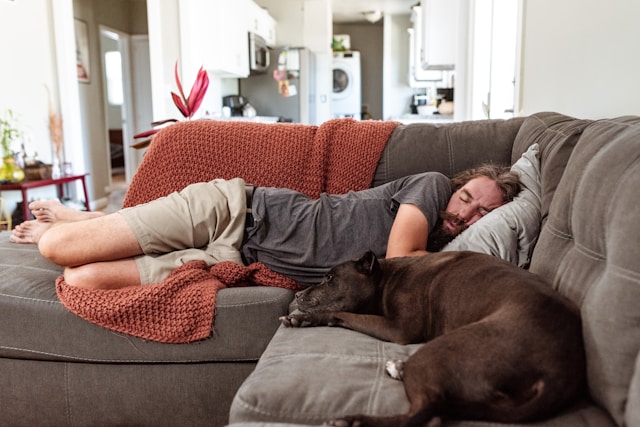Body Language Hacks That Make You Instantly Seem Friendly And Likeable
 Unsplash
Unsplash Words matter, but when it comes to first impressions, your body language speaks volumes before you even utter a sound. Nonverbal cues like posture, eye contact, and facial expressions communicate to others whether you’re approachable, trustworthy, and likeable. Mastering a few simple body language hacks can significantly boost your social interactions, helping you make positive connections in both personal and professional settings.
1. Stand tall with open posture.
 Source: Unsplash
Source: Unsplash Slouching or hunching over makes you appear closed off, insecure, or uninterested. Instead, stand tall with your shoulders back and chest slightly lifted. This open posture projects confidence and conveys a sense of ease. Avoid crossing your arms, as this can create a defensive barrier. Instead, keep your arms relaxed by your sides or use open gestures while speaking.
2. Make genuine eye contact.
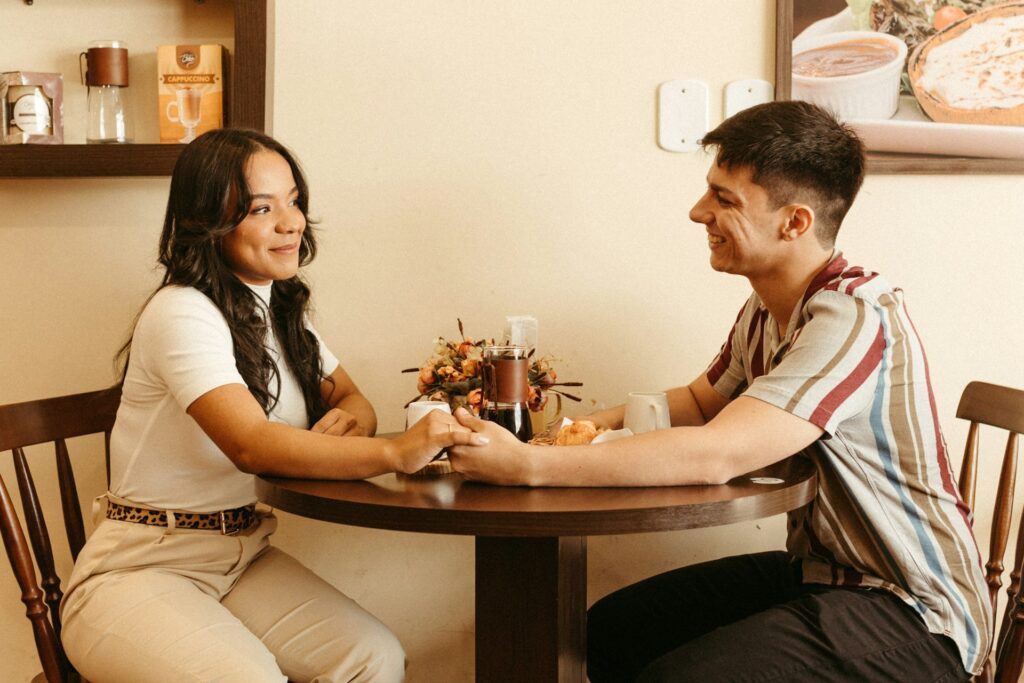 Source: Unsplash
Source: Unsplash Eyes are incredibly expressive, revealing emotions and levels of engagement. Maintaining good eye contact makes you seem approachable and trustworthy. Aim for 50-70% eye contact while speaking and listening. Avoid staring intensely, but also don’t nervously dart your eyes around. A warm, relaxed gaze shows you’re present and interested in the interaction.
3. Offer a sincere smile.
 Source: Unsplash
Source: Unsplash A genuine smile is one of the most powerful tools for conveying warmth and friendliness. Don’t force a fake grin – instead, think of something that makes you happy or focus on the positive aspects of the interaction. A real smile engages not only your mouth, but the muscles around your eyes as well, making it feel authentic.
4. Mirror the other person’s body language (subtly).
 Source: Unsplash
Source: Unsplash Mirroring involves subtly adopting similar postures, gestures, or facial expressions as the person you’re interacting with. Done with moderation, this subconscious mirroring builds rapport and creates a sense of connection. Don’t mimic their every move, but try leaning in slightly when they do, or subtly tilting your head in a similar direction.
5. Use open hand gestures.
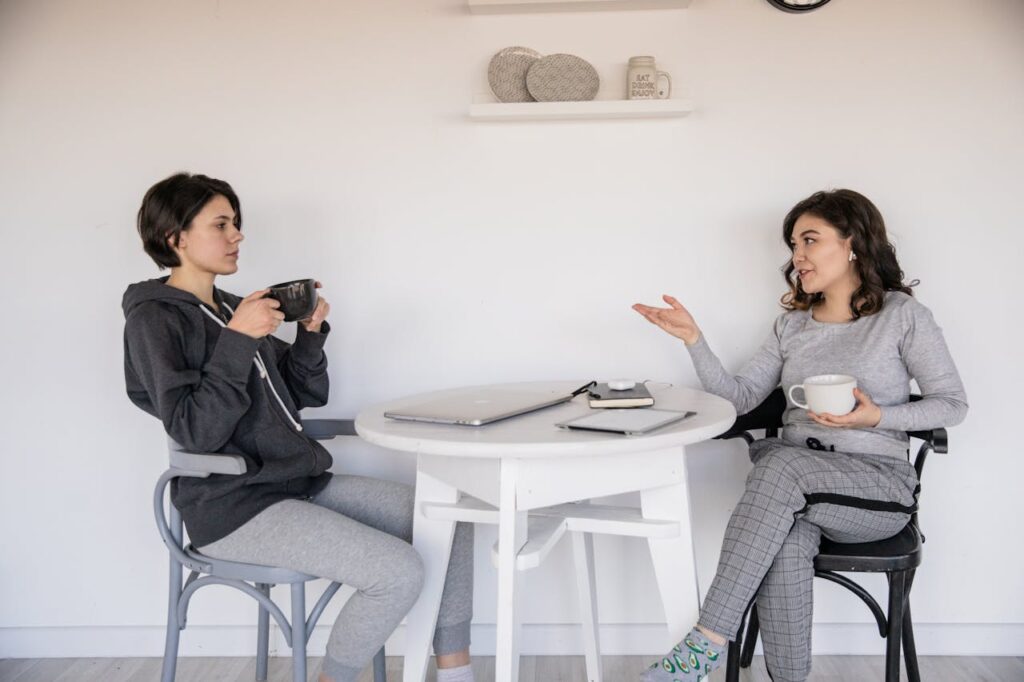 Source: Unsplash
Source: Unsplash Keeping your hands hidden in pockets or clasped tightly together can make you seem nervous or closed off. Instead, use open hand gestures while speaking. Palms facing up conveys sincerity, while keeping hands relaxed and visible communicates trustworthiness. Avoid fidgeting or tightly clenched fists, which can signal anxiety.
6. Nod actively to show you’re listening.
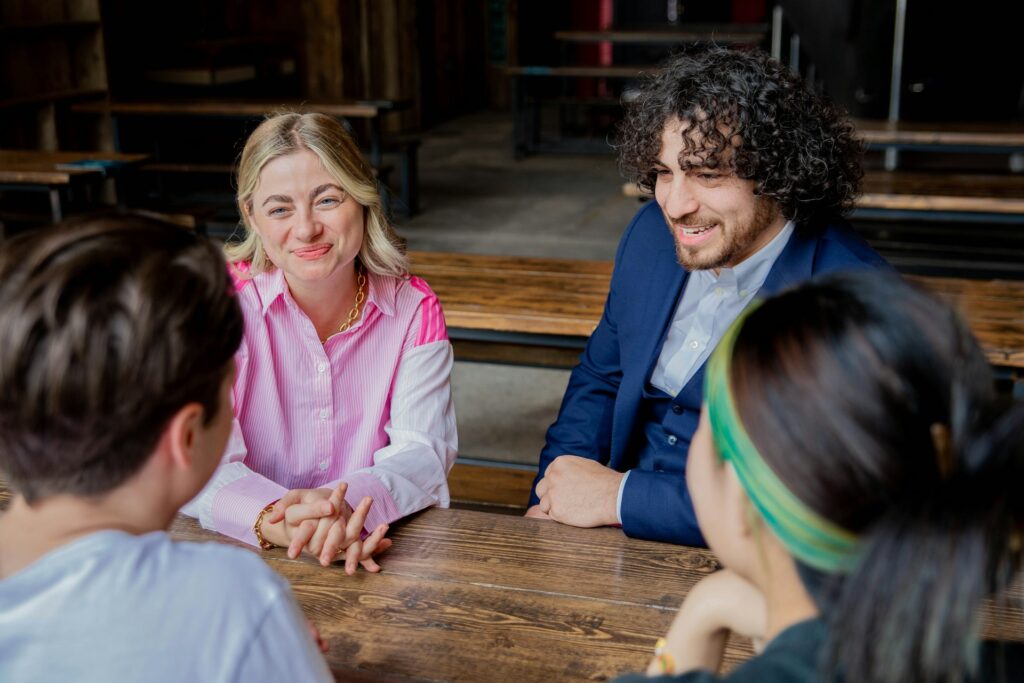 Source: Unsplash
Source: Unsplash Nodding your head as the other person speaks is a nonverbal way to demonstrate that you’re engaged and attentive. It encourages the speaker to continue and indicates that you understand, or at least are following along, with what they’re saying. Combine nodding with verbal affirmations like “mmhm,” “interesting,” or “I see” for even more powerful active listening.
7. Slightly tilt your head to express interest.
 Source: Unsplash
Source: Unsplash A slight head tilt to one side conveys curiosity, attentiveness, and a friendly demeanor. It breaks away from a rigid posture and subconsciously signals to the other person that you’re invested in the conversation and finding what they have to say interesting.
8. Maintain a comfortable distance.
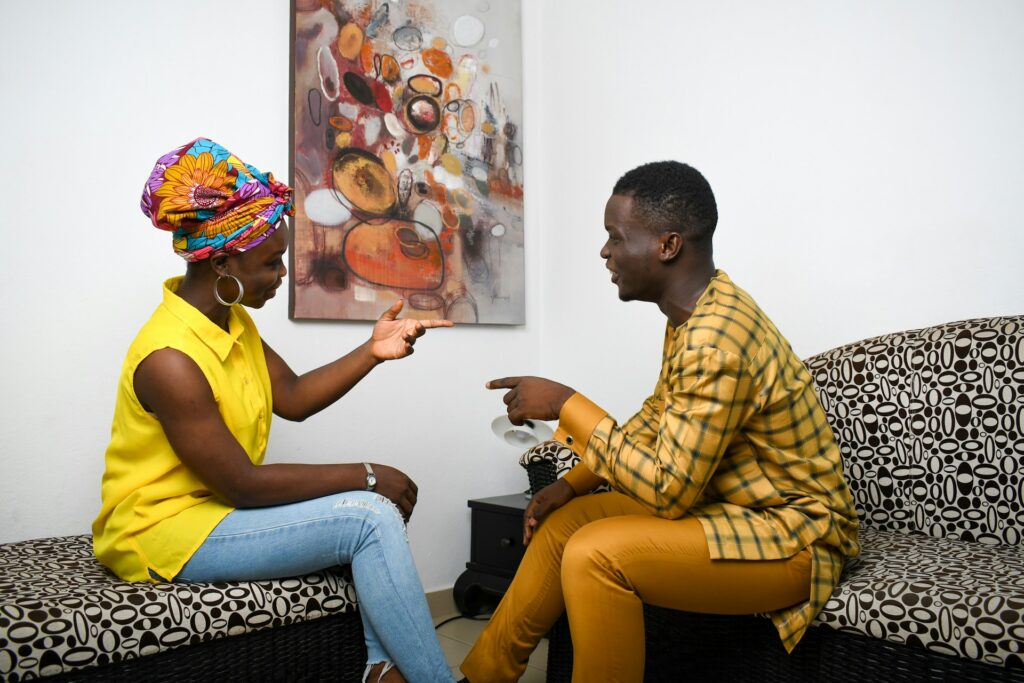 Source: Unsplash
Source: Unsplash Respecting personal space is crucial for making people feel comfortable. Standing too close can feel intrusive, while standing too far away creates an unnecessary distance. Find the sweet spot – usually about an arm’s length away. Be mindful of cultural differences, as comfortable personal space varies across the globe.
9. Soften your facial expressions.
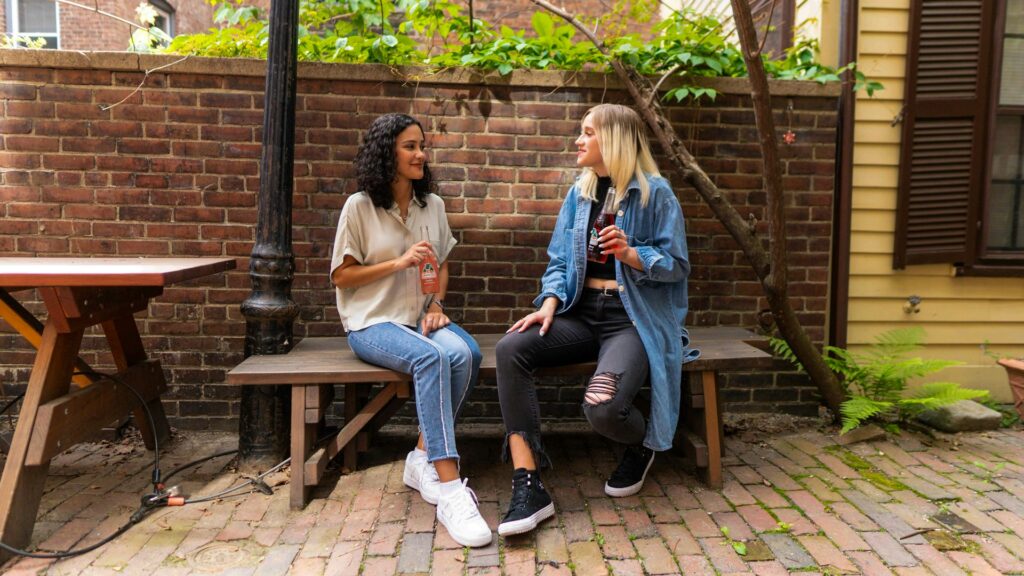 Source: Unsplash
Source: Unsplash Furrowed brows, a tightly pursed mouth, or a tense jawline can unintentionally make you seem standoffish or even angry. Consciously relax your facial muscles and aim for a soft, pleasant expression. A slight upturn of the corners of your mouth, even if not a full smile, conveys approachability and warmth.
10. Point your feet towards the person you’re talking to.
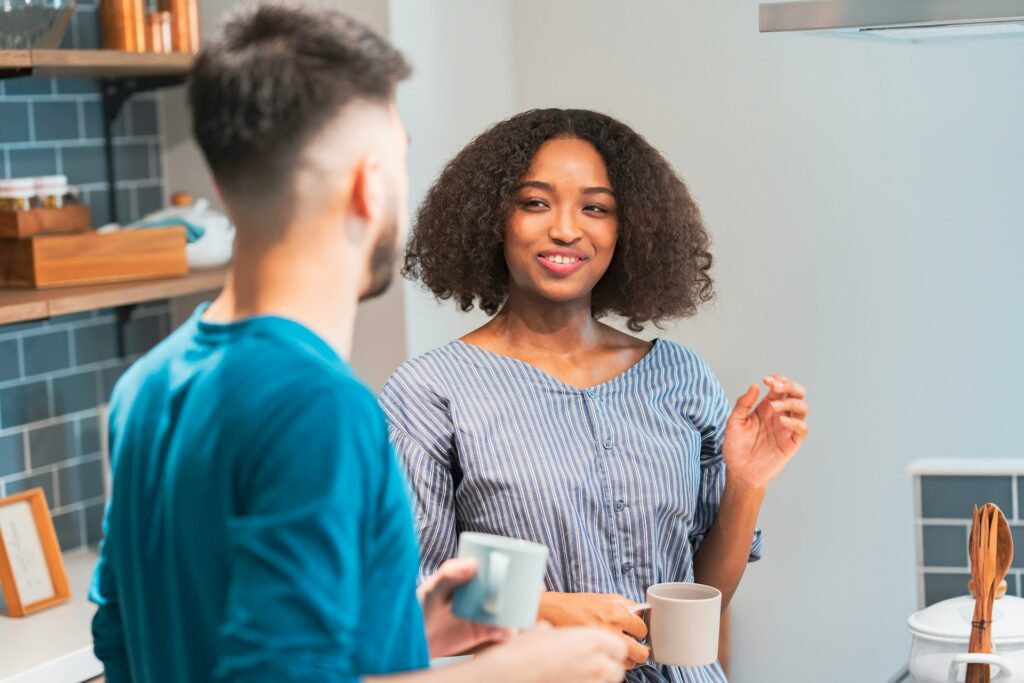 Source: Unsplash
Source: Unsplash Our feet often reveal our subconscious intentions. When you’re engaged in a conversation, angling your feet towards the speaker is a nonverbal sign of interest and respect. Conversely, having your feet pointed away or towards the nearest exit signals a desire to end the interaction.
11. Give a firm handshake (when appropriate).
 Source: Unsplash
Source: Unsplash A handshake is often the first physical contact you’ll have in social or professional settings. A firm (but not bone-crushing) handshake, combined with eye contact and a smile, projects confidence and positive energy. Avoid a limp or overly aggressive handshake, as both can create an unfavorable impression.
12. Uncross your legs.
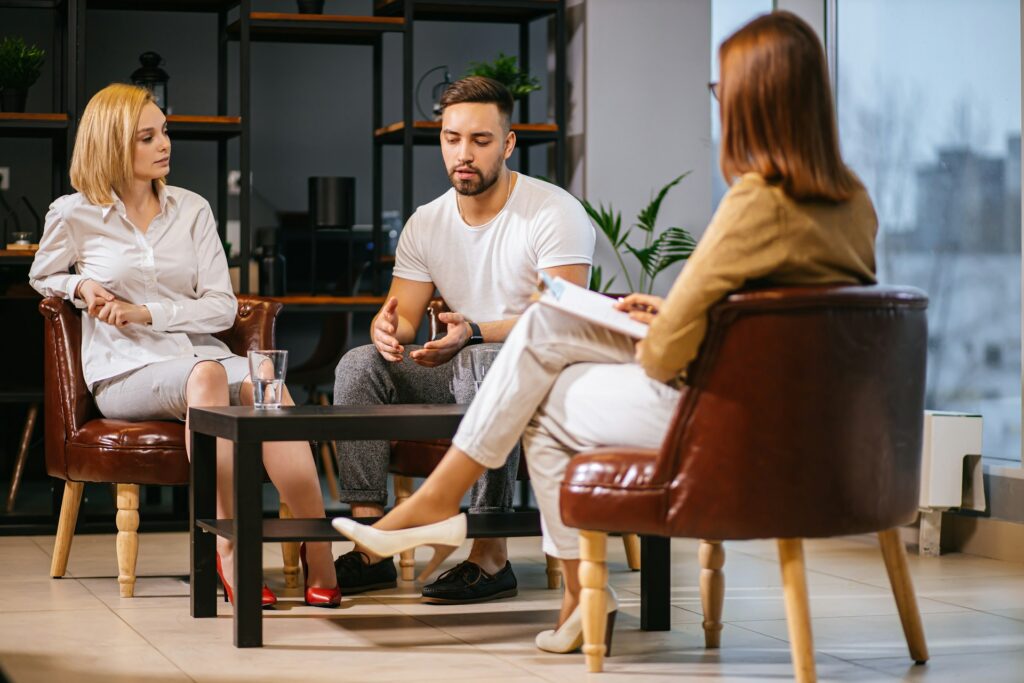 Source: Unsplash
Source: Unsplash Crossed legs can sometimes be read as a defensive or disengaged posture. While it’s perfectly fine to cross your legs occasionally, especially when seated for long periods, try opting for an open, parallel leg stance more often. This conveys receptiveness and a willingness to engage with the other person.
13. Use the power of touch (respectfully).
 Source: Unsplash
Source: Unsplash Touch is a powerful form of nonverbal communication, but it’s important to be mindful of boundaries and cultural norms. In appropriate situations, a brief, light touch on the arm or shoulder can convey warmth, reassurance, or excitement. However, always gauge the comfort level of the other person and respect their personal space.
14. Be aware of nervous fidgeting.
 Source: Unsplash
Source: Unsplash Fidgeting with your hair, tapping your feet, or clicking a pen can be distracting and signal nervousness or disinterest. Be mindful of these small habits and try to channel nervous energy into more controlled gestures. It’s okay to move and shift your body for comfort, but aim for smooth, purposeful movements rather than repetitive fidgeting.
15. Match your tone of voice to your body language.
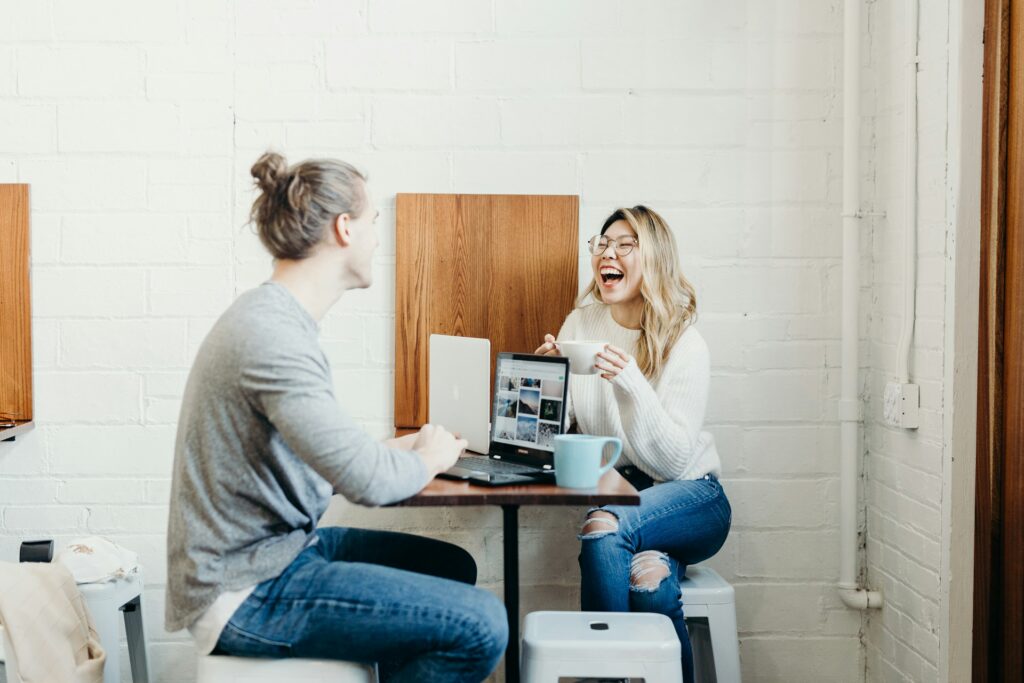 Source: Unsplash
Source: Unsplash Your body language and vocal delivery should work in harmony for the most effective communication. If you’re using open, friendly body language but speaking in a monotone or overly formal voice, the message becomes mixed. Let your tone match your demeanor – warm, upbeat, and enthusiastic.
16. Practice your power pose.
 Source: Unsplash
Source: Unsplash Even if you’re feeling anxious or insecure, adopting a power pose for a few minutes before a challenging social situation can improve your confidence and make you seem more self-assured. Examples of power poses include the classic “Wonder Woman” stance (feet shoulder-width apart, hands on hips) or sitting back expansively in a chair.
17. Be authentic!
 Source: Unsplash
Source: Unsplash While body language hacks are incredibly effective, the most important thing is to be genuine. Forced or overly practiced gestures can come across as insincere. Focus on feeling comfortable and confident in yourself, and your body language will naturally reflect that positive energy, making you both approachable and likable.



